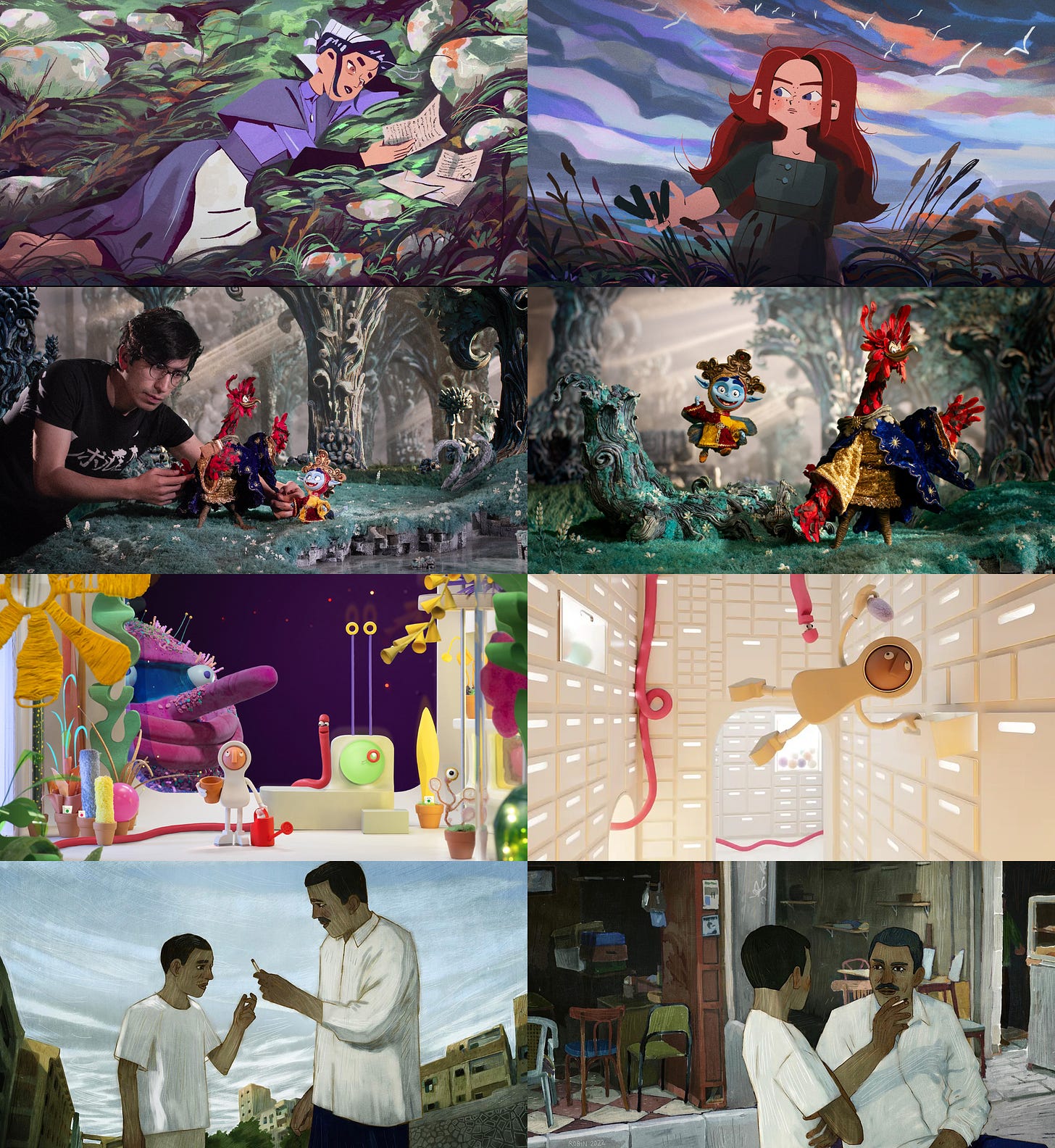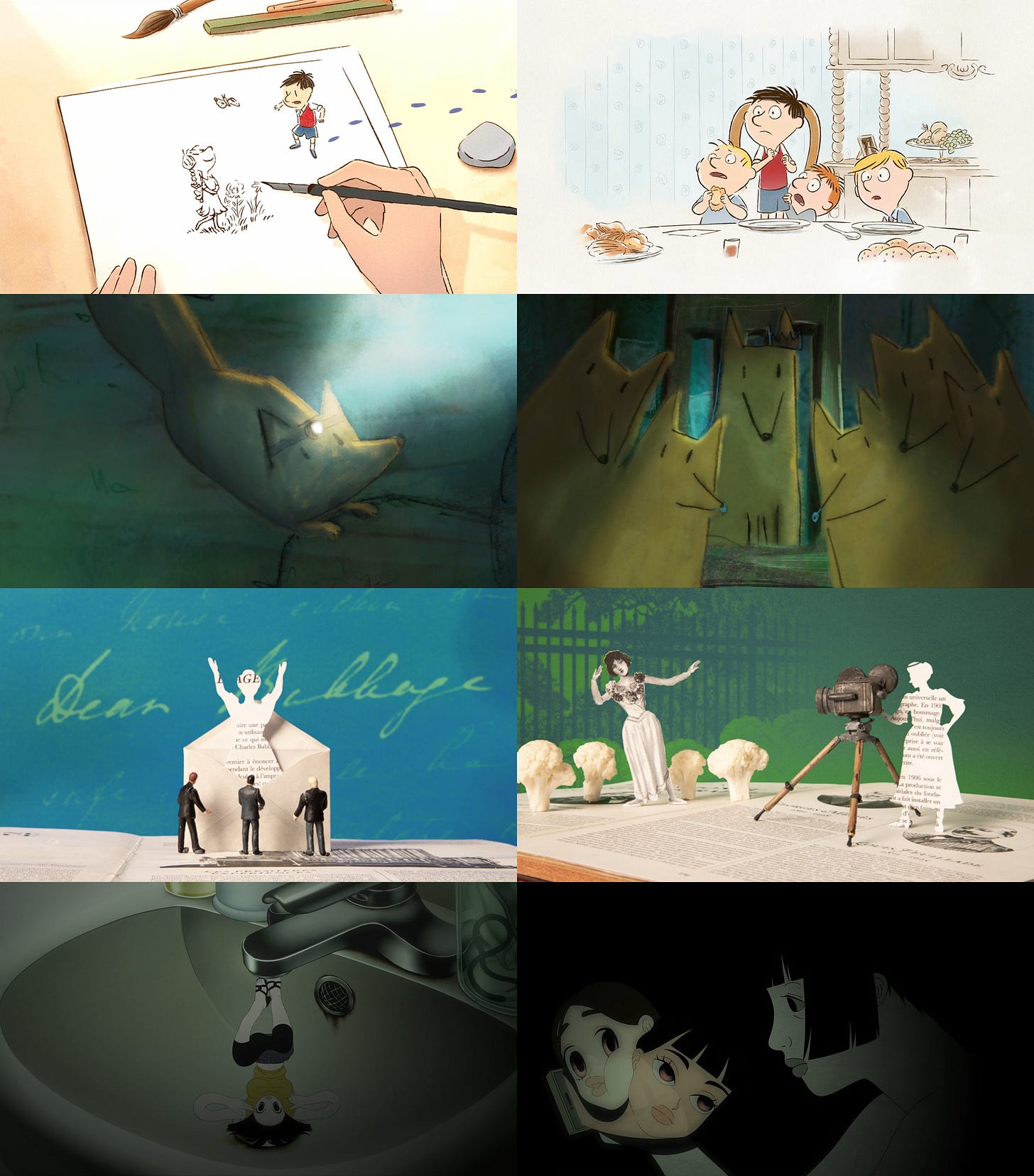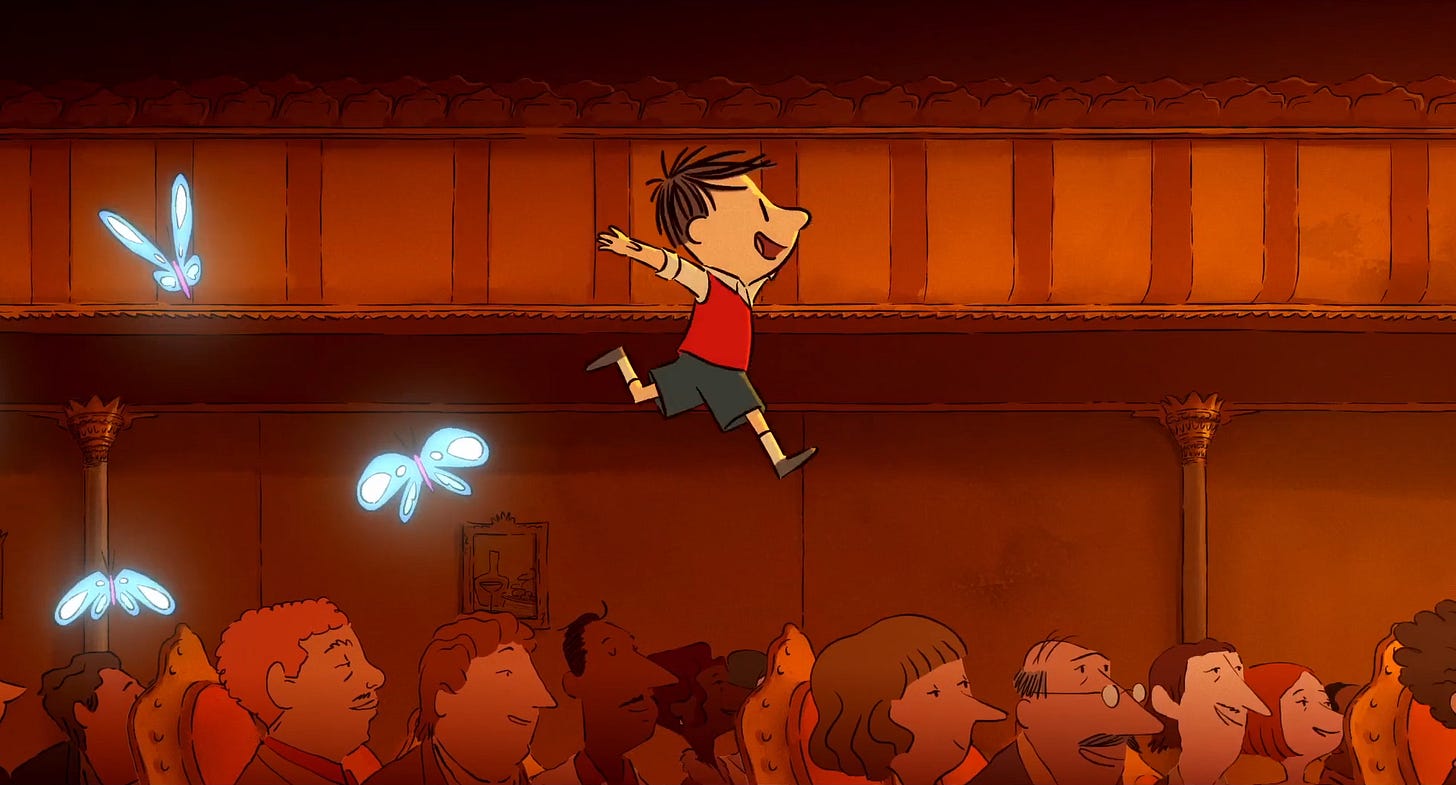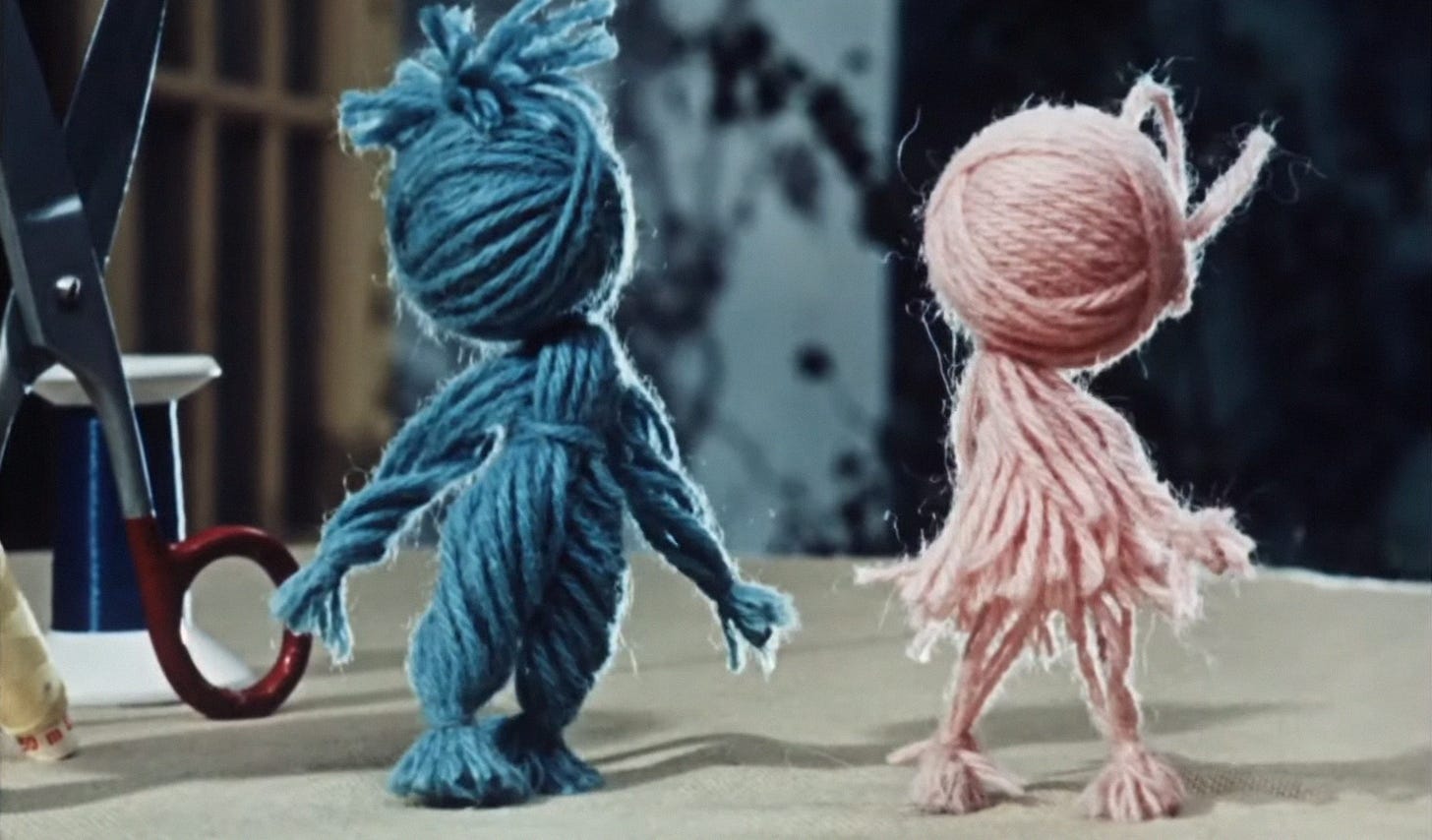The Biggest Animation Event in the World
Plus: a Czech mini-masterpiece and global animation newsbits.
Happy Juneteenth! We’re here with a new issue of the Animation Obsessive newsletter — and a new batch of animation highlights from around the world. This is the list for today:
1 — rounding up Annecy, the world’s largest animation festival.
2 — the week’s animation newsbits beyond Annecy.
3 — a film by the Czech master Hermína Týrlová.
We publish Thursdays and Sundays. If you haven’t already, you can sign up for free to receive our Sunday issues right in your inbox, every week:
With that said, let’s go!
1. Annecy, in summary
In the animation world, one event defined this week: the Annecy International Animation Film Festival.
Annecy happens once a year. Attendees see the best recent pro and student animation — but also, just as importantly, what’s on the horizon. Annecy is the place to show, sell and network. It always gives you a glimpse of the future, from pipedream pitches to exciting projects well into development.
Although it takes place in France, Annecy is a global thing. The event went back to a fully in-person format this year — reporting “13,248 badgeholders (an 8% increase compared to 2019, our record year), coming from 106 countries.”
Impressive numbers, but what happened? A lot. We’re sifting through the details today — rounding up intriguing, fun and odd tidbits that came out of Annecy 2022.
The animation of tomorrow
What gets made tends to be what gets supported. Money and backing make all the difference. It’s in this spirit that Annecy’s “MIFA” market shows off promising animation in progress each year, opening it up to prizes from the festival’s partners.
These prizes matter. They signal creators to watch, and offer the “grants, residencies, pre-purchases or technical support” crucial to making young projects real.
This year, a pair of French features were among the MIFA prizewinners. One called The Heart of the Dancer took two awards, netting €25,000 and key perks. It follows a young French girl, Venaig, whose father leaves to fight in World War I. Cartoon Brew reports that her “town’s annual festival has been called off by war” — but Venaig decides to bring it back.
The Heart of the Dancer walked a long road to get here. In early 2021, Annecy guided its creators through a sponsored residency that led to a MIFA pitch last year. The film didn’t win a prize then, but it drew the attention it needed. Variety notes that the filmmakers:
… very quickly found an eager partner in French studio Vivement Lundi, teaming with the Rennes-based production house to develop the project even further. That extra work paid off, and when the World War I-set folktale returned to pitch at this year’s MIFA, the project broke out as a serious buzz title, inspiring immediate and ardent distributor attention.

Among MIFA shorts, the big cash prize (€35,000) went to The Sunflowers’ Sorrow, a French piece by director Léa Krawczyk. “After not speaking to each other for many years,” reads the plot summary, “Sue and Paula, two sisters aged 76 and 79, and both former wrestlers, reunite for a last motorbike road trip to their childhood home.”
Meanwhile, The Day I Smoked a Cigarette with My Father landed two awards in the short-film category. It’s set in 1960s Cairo and co-produced in Egypt and France. The channel Arte France pre-bought the film for TV and streaming.
As for productions made for TV, the best-received one actually didn’t win at MIFA. Variety’s Ben Croll recounts that Yukon: The Space Botanist, an animated series for preschoolers, got “hearty laughs from a room full of buyers and commissioning editors at least three decades older than the show’s intended audience.” It may not have won, but Croll spies a potential success.
And that’s worth reiterating: missing out on a MIFA prize doesn’t spell failure for a project in development. Some of the best-looking stuff at Annecy, like The Ballad of the Phoenix by Arturo and Rodolfo Ambriz (Frankelda’s Book of Spooks), got the kind of praise that leads to backing — even if it didn’t win anything this time.
Beyond the MIFA market, Annecy also saw a raft of unveilings and work-in-progress presentations by studios large and small. Disney was there with a massive showcase, including its pan-African series Kizazi Moto: Generation Fire and South African series Kiff.
At the same time, Netflix revealed scenes from My Father’s Dragon and Wendell & Wild — and Guillermo del Toro’s Pinocchio, which has screenshots now.
We learned more about Netflix’s Spirit Rangers, too. This is an upcoming preschool series created by Karissa Valencia, a Chumash tribal citizen, and executive-produced by the prolific Chris Nee (Doc McStuffins). As Valencia said, “Our show celebrates Indigenous storytelling with Indigenous talent at the helm.”
For her part, Nee remarked:
When I first met Karissa, I knew that she was a young, promising and talented storyteller, and when I found out that she was Native American, I knew that we needed her voice and I wanted to know what stories she wanted to tell from her unique point of view.
Alongside the big stuff, a stray, smaller-scale reveal grabbed our attention: The Storm Whale Trilogy. Why? This batch of 30-minute TV specials, based on a children’s book series, comes from the British team behind the excellent Tiger Who Came to Tea. The animation test (embedded above) has all the visual flair that pedigree would lead you to expect.
What’s happening right now
The future aside, Annecy’s main point is to elevate the animation of the present — with prestigious awards, world premieres and more. Annecy recognition might not confer Oscar-level clout, but it’s up there.
This year, the “Cristal” grand prize for features went to Little Nicholas: Happy as Can Be. The win followed a hype train in Europe that didn’t necessarily reach America — Little Nicholas is a thoroughly French character, derived from the iconic children’s stories written by René Goscinny, the co-creator of Asterix. The film was a co-production between France and Luxembourg.
Other feature awards went to an international crop of films. Here, we find South Korea’s Chun Tae-il: A Flame That Lives On — about a labor activist who self-immolated in protest during the ‘70s. Winning as well was Dozens of Norths, a deeply uncomfortable watch by the Japanese master Koji Yamamura (Mt. Head).
Yamamura competed at Annecy with his children’s short Polar Bear Bears Boredom, too. That film might not have won a prize, but his quirky behind-the-scenes video about it was one of our highlights of the festival.
Ultimately, Amok (Hungary, Romania) took the Cristal for shorts. And the Cristal for student films, a short competition of its own, was claimed by the seven-minute Persona (South Korea).

Persona is a visual stunner — it stuck out for us from the first image we saw. Director Sujin Moon recently told Zippy Frames that her film is “about young women and the pressure that they feel.” You can see the influence of Satoshi Kon in it. For Moon, it was a passion project:
I wanted to push myself to my limit, and my family also understood my desires. I was able to work on it for 3 exhausting years. I wanted something that was purely my own, so I didn’t ask for any help apart from requesting people to look at my storyboard when it was finished.
There’s a long list of winners besides these. One more film that did well, although in smaller categories, was the double-victor The Queen of the Foxes from Switzerland. It’s incredibly charming, as one look at the publicly available clips will tell you.
Like with the MIFA market, some of the coolest-looking projects in the main competition didn’t win anything. That included the premiere of The Flying Sailor by Wendy Tilby and Amanda Forbis (When the Day Breaks), plus our recent festival favorites Luce and the Rock, A Bite of Bone and Letter to a Pig.
Also shut out was the French stop-motion series Look for the Woman. It sees documentarian Julie Gavras trying her hand at animation for the first time. Using a creative visual style, the project highlights women erased from the history books — Annecy presented an episode on Ida Pfeiffer, a major explorer from the 19th century.
Until next time
Whatever its oversights or omissions, Annecy 2022 was a big success. Pulling off an event this size after the pandemic is no minor thing — over in the video game world, the long-running E3 didn’t even happen this year.
And, even now, Annecy is looking forward to 2023. It’s opened up the residency applications for next year, the same program that allowed The Heart of the Dancer to succeed this time around. The festival’s special focus in 2023 will be on Mexican animation — Jorge R. Gutierrez (Maya and the Three) is already set to design the poster.
2. Newsbits
We lost Everett Peck (71) this week — the creator of cartoons Duckman and Squirrel Boy.
Since we mentioned Canadian artists Wendy Tilby and Amanda Forbis above, did you know that their classic When the Day Breaks did rotoscoping right?
Annecy’s not the last top animation festival of 2022. In Canada, Ottawa is revving up for September. It recently announced a retrospective on animator Jonni Phillips (Barber Westchester).
Some commentators have noted the shadow cast over Annecy by the war. Russia was reportedly scarce — instead, it’s been showing at venues like Telefilm Vietnam this month.
Almost 66% of Ukraine’s children are now displaced. This July, a group of companies (Nickelodeon, the BBC and more) will launch the YouTube channel Sunflower TV to offer refugee children free, Ukrainian-dubbed cartoons.
In America, Lightyear is Pixar’s big return to theaters, but it’s not doing as well as expected at the box office. Cartoon Brew guesstimates that it’s drawn roughly half as many people as Finding Nemo did in 2003.
Lastly, France’s upcoming Edmond and Lucy is supposedly “the first animated series to be made almost entirely in real-time CGI.” Check out the trailer.
Thanks for reading today’s issue so far! We appreciate your taking the time to check it out.
Normally, the last part of the newsletter is reserved for members — but we’re unlocking it today. Below, you can read about a film by Hermína Týrlová, known as the “mother of Czech animation.” The information comes from a pair of rare books.
Regarding memberships, they really are key to keeping the newsletter going. The amount of time and money this project demands is no joke. We hope you’ll consider joining us as we get even more ambitious in the coming months — there’s exciting stuff planned:
By default, we offer a 40% discount to students and educators. If you’re a teacher looking for a deeper bulk discount for a class, let us know. Some of our most educational issues are paywalled in our archive — we’d love to make them even more available to students.
3. Quick look back — Two Balls of Wool
Right now, a main topic of study for us is Hermína Týrlová (1900–1993). The “mother of Czech animation” was much more than that — her films were weird, wildly different. And they had little in common with the output of Jiří Trnka, Czech animation’s star. This rubbed some in Czechoslovakia the wrong way.
In her best work, Týrlová excelled at playfulness. Critics have written about her lyrical quality, and it’s true. Týrlová films are sometimes less traditional narratives and more spellbinding strings of events and visual ideas. Her goal was to tell childlike stories in stop-motion, often with unusual materials.
That is, until the ‘50s — when Týrlová’s famous style suddenly disappeared. Under pressure from her peers and superiors, her weirdness gave way to more standard fairy-tale films. Týrlová felt like she’d lost her way as an artist. As she said in 1979:
… fairy tales absolutely didn’t fit me. And indeed I knew that even then, when I started shooting them. But, after Trnka’s Emperor’s Nightingale [1949] and Bayaya [1950], there was such a period of fairy tales in our animated films. Back then I was criticized at the Artistic Council in Prague, told that I was “still playing with my little feelings” and that I should prove myself. So I went for it: I shot Goldilocks [1955]. I wrote the script based on [Josef] Kainar’s puppet play and adapted it to a childlike viewpoint, as I always do [...] But when someone started a fairy tale at that time, with a king, with princesses, everyone saw Trnka in it. And so Goldilocks was criticized as well.1
It was a no-win situation, and the start of a few painful years for Týrlová. Slowly, though, she found herself — coming back bolder and more original than ever. “Lesson learned: from now on, I shouldn’t go into things that don’t fit me,” Týrlová said.
Two Balls of Wool (1962) was one of the early films in Týrlová’s return to form. It’s a small masterpiece of her style. There’s no real plot — it’s about the contents of a sewing kit, which come to life when people aren’t around. You won’t find an eye or even a face among the cast, let alone any dialogue. But it’s magic.
There’s so much character here, so much whimsy, that it’s easy to feel like a child again in front of Týrlová’s vision. The manic energy of the pink and blue wool children, the life imbued in the pincushion “horse” and tape measure “snake” — it all works better than it should. It’s a game, and a young kid’s imagination channeled onto the screen.
In his book on Týrlová, writer František Tenčík explained that Two Balls of Wool is about the “denial of the mundaneness of things,” about portraying their “secret life.” Each new idea that Týrlová and her team put on screen expands your idea of what’s possible in the everyday world around us. She makes it, and us, feel richer. The joys of it all take no effort to find — they’re right there on the surface.
You’ll find a restored copy of Two Balls of Wool on YouTube, courtesy of the Czech National Film Archive.
See you again soon!
Our Týrlová write-up relies on two books named after her: Hermína Týrlová (1964) and Hermína Týrlová (1982) — written by Tenčík and Marie Benešová, respectively.
Note: Týrlová’s word citečkama can translate as “little feelings,” “fee-fees” or even “feewings.” Whichever you pick, the ideas that Týrlová was “playing with” in her films also helped to make them special, and to make them last. Her detractors at the time missed the point. Today, she’s recognized as one of the most important figures in the whole Czech animation canon.




Wow, Annecy sounds amazing and must attend. The Storm Whale trilogy animation style is bonkers! It looks like a children's book that came alive. Stoked to learn about so many low-key animated shorts in this article. Mahalo nui -Dar
Decades ago I used to attend the International Tournée of Animation. Year after year. At the time it was amazing. Do you folks have any records of that organization? I remember The Man Who Planted Trees, Primiti Too Taa, Bead Game, and others. It would be so cool to see at the very least playlists of these yearly Tournées.